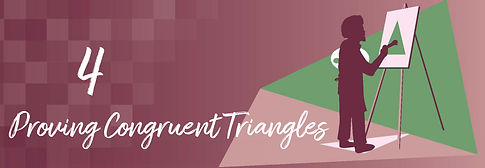

Chapter Outline
In this chapter, you’ll learn how to prove congruence and use congruent figures in real-world situations by understanding and applying geometric principles. Congruence means that two figures have the same size and shape, which can be proven through various transformations such as translations, rotations, and reflections. In real-world situations, proving congruence is essential in fields like architecture, engineering, and design, where ensuring the accuracy and consistency of shapes and structures is crucial. For example, architects use congruent shapes to create symmetrical designs, while engineers rely on congruence to ensure parts fit together perfectly in machinery. By mastering these concepts, you’ll be able to apply congruence to solve practical problems and create precise, reliable designs.
4.3
Triangle Congruence - ASA & AAS
Learning Objectives
By the end of this section, you will be able to:
-
Prove ASA and AAS criteria for triangle congruence
-
Use ASA or AAS in triangle proofs
-
Apply ASA or AAS to determine congruence
-
Examine the angle-side-angle (ASA) and angle-angle-side (AAS) criteria for triangle congruence